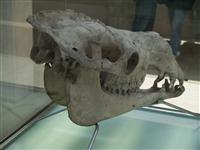 Online Farming Course -Farm Animal Biology, Alternative education opportunity, for a part time qualification through elearning.
Online Farming Course -Farm Animal Biology, Alternative education opportunity, for a part time qualification through elearning.- Learn about Anatomy and Physiology of Animals
- Flexible 100 hr course, self paced study
Course Structure
There are 11 lessons as follows:
- Introduction, Cells & Tissues- Livestock classes, livestock products, interrelationship between crops and livestock, cells and tissues, special properties of cells, osmosis, nutrient waste.
- The Digestive System - Digestive system, mouth, tongue, teeth, oesophagus, simple stomach, small intestine, large intestine, ruminant stomach, accessory organs of the digestive system, digestion, absorption and utilisation in the simple stomach, enzymes, breakdown by microorganisms, digestion, aborption and utilisation in the ruminant stomach, mechanical action, action of micro-organisms, utilisation of the end products of digestion,
- The Circulatory System - Circulatory system, composition of blood, functions of blood, clotting mechanism, immunity, blood vessels, arteries, veins, cappillaries, physiology of the circulatory system, rates of heart beats, spleen, lympathic system, circulatory networks.
- The Urinary System - Anatomy of the urinary system, kidneys, ureter, bladder, physiology of urinary system, excretion in different animals.
- The Nervous System - Central and peripheral nervous system, main parts of the nervous system, neurones, sensory neurones, motor neurones, central nervous system, the brain, spinal cord, peripheral nervous system, cranial nerves, spinal nerves, autonomic nervous system, reflex actions, endocrine system, structure and function of the ear, hearing, structure and function of the eye, the iris, structure and function of the nose.
- Respiration - Anatomy of respiration, trachea, bronchial tree, lungs, physiology of respiration, gaseous exchange, rate and depth of breathing.
- The Reproductive System- Anatomy of the male reproductive system, testes, accessory organs, penis, physiology of male reproductive system, hormone production, sperm production, erection, ejaculation, fertility problems in males, venereal diseases, other diseases, injury, physical immatury, emotional immaturity, nutrition, poor handling, anatomy of female reproductive system, ovaries, fallopian tubes, uterus, cervix, physiology of the female reproductive system, ovulation, oestrus cycle, fertility problems, difficulties conceiving, venereal and other diseases, physical abnormalities, nutrition, inability to carry a foetus to full term, pregnancy and parturition, fertilisation, pregnancy, parturition,birth process, difficult births, structure of the mammary glands, secretion of milk, milk ejection, reproduction data for cows, sows and ewes.
- Muscles & Meat - Muscles and meat, smooth muscle, striated voluntary muscle, cardiac muscle, structure of meat, dressing out percentage, composition of the beef animal, meat quality and tenderness, juiciness, flavour, cuts and joints of meat.
- The Skeleton- Bones, how bones are formed, anatomy of bones, fractures and fracture healing, five types of bone, joints of bone, the skeleton, dentition, the dental formula, cattle, dental formula of an ox and cow, eruption of permanent teeth, pigs.
- Animal Growth, Development & The Endocrine System - Growth and development, growth curve, prenatal growth, post-natal growth, fat, factors which affect the size of newborns, factors affecting post-natal growth, early maturing, compensatory growth, endocrine system, pituitary gland, thyroid, parathyroid, thymus, adrenal bodies, pancreas, testes, ovaries, pineal body, mucous membrane of the stomach.
- Comparing Different Animals- Poultry, digestion, gullet, crop, proventriculus, gizzard, intestine, caecum, rectum, incubating eggs, natural incubation, symptoms of a broody hen, fish.
Each lesson culminates in an assignment which is submitted to the school, marked by the school's tutors and returned to you with any relevant suggestions, comments, and if necessary, extra reading.
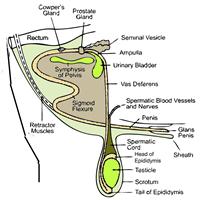 COURSE AIMS COURSE AIMSOn successful completion of the course you should be able to do the following:
 WHAT THE COURSE COVERS WHAT THE COURSE COVERSThese are just some of the things you will be doing:
 RECOMMENDED BOOKS RECOMMENDED BOOKSCheck our range of mail order animal husbandry and biology texts (reviewed and selected by our academic staff); available mail order through the ACS Bookshop click to see our bookshop |
Why Choose This Course
- Course notes and materials are unique (written by our staff) and up to date (most revised annually) –our graduates are more up to date with what they learn than many other institutions.
- We don’t just present you with information; we also work to help you understand and remember it, develop an ability to apply it in the real world, and build networks with others who work in this field.
- Start any time, study at your own pace, study from anywhere
- Don’t waste time and money traveling to and from classes
- More choices in your assignment work –courses are written to allow you more options to focus on parts of the subject that are of more interest to you.
- Tutors more accessible than many colleges – academics are hard at work in both the UK and Australia, 5 days a week, 16 hours a day, and answering individual queries from students are top priority and always attended to within a day –often within an hour.
- Be treated like an individual –don’t get lost in a crowd of other students. Our tutors interact with you one to one.
- Extra help at no extra cost where needed.. If you find a task you can’t do, we will help you through it or give you another option.
- Support after graduation –We will advise on getting work, starting a business, putting a CV together. We will promote students and their businesses through our extensive profile on the internet. Any graduate who asks will be helped.
How You Study
- When you enroll, we send you an email that explains it all.
- You are given a short orientation video to watch, where our principal introduces you to how the course works, and how you can access all sorts of support services
- You are either given access to your course online, or sent a CD or course materials through the mail (or by courier).
- You work through lessons one by one. Each lesson has at least four parts:
- An aim -which tells you what you should be achieving in the lesson
- Reading -notes written and regularly revised by our academic staff
- Set Task(s) -These are practicals, research or other experiential learning tasks that strengthen and add to what you have been reading
- Assignment -By answering questions, submitting them to a tutor, then getting feedback from the tutor, you confirm that you are on the right track, but more than that, you are guided to consider what you have been studying in different ways, broadening your perspective and reinforcing what you are learning about
- Other - Your work in a course rarely stops at just the above four parts. Different courses and different students will need further learning experiences. Your set task or assignment may lead to other things, interacting with tutors or people in industry, reviewing additional reference materials or something else. We treat every student as an individual and supplement their learning needs as the occasion requires.
- You are given access to and encouraged to use a range of supplementary services including an online student room, including online library; student bookshop, newsletters, social media etc.
- You are provided with a "student manual" which you can refer to if and when needed. It provides a quick solution to most problems that might occur (some people never need to use this; but if you are studying late at night & have a problem, the manual provides a first port of call that can often get you moving again).
Recognition
- ACS is known and highly respected internationally: by employers and academics alike:
- Recognised by International Accreditation and Recognition Council
- ACS has been training people around the world since 1979
- Over 100,000 have now studied ACS courses, across more than 150 countries
- Formal affiliations with colleges in five countries
- A faculty of over 40 internationally renowned academics –books written by our staff used by universities and colleges around the world.
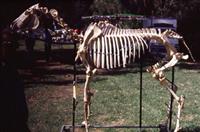 Develop a sound foundation knowledge of animal anatomy and physiology, as a basis to understanding care and/or management of animals in domesticated or wild situations.
Develop a sound foundation knowledge of animal anatomy and physiology, as a basis to understanding care and/or management of animals in domesticated or wild situations.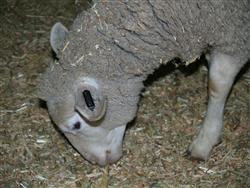
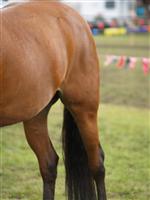
ليست هناك تعليقات:
إرسال تعليق